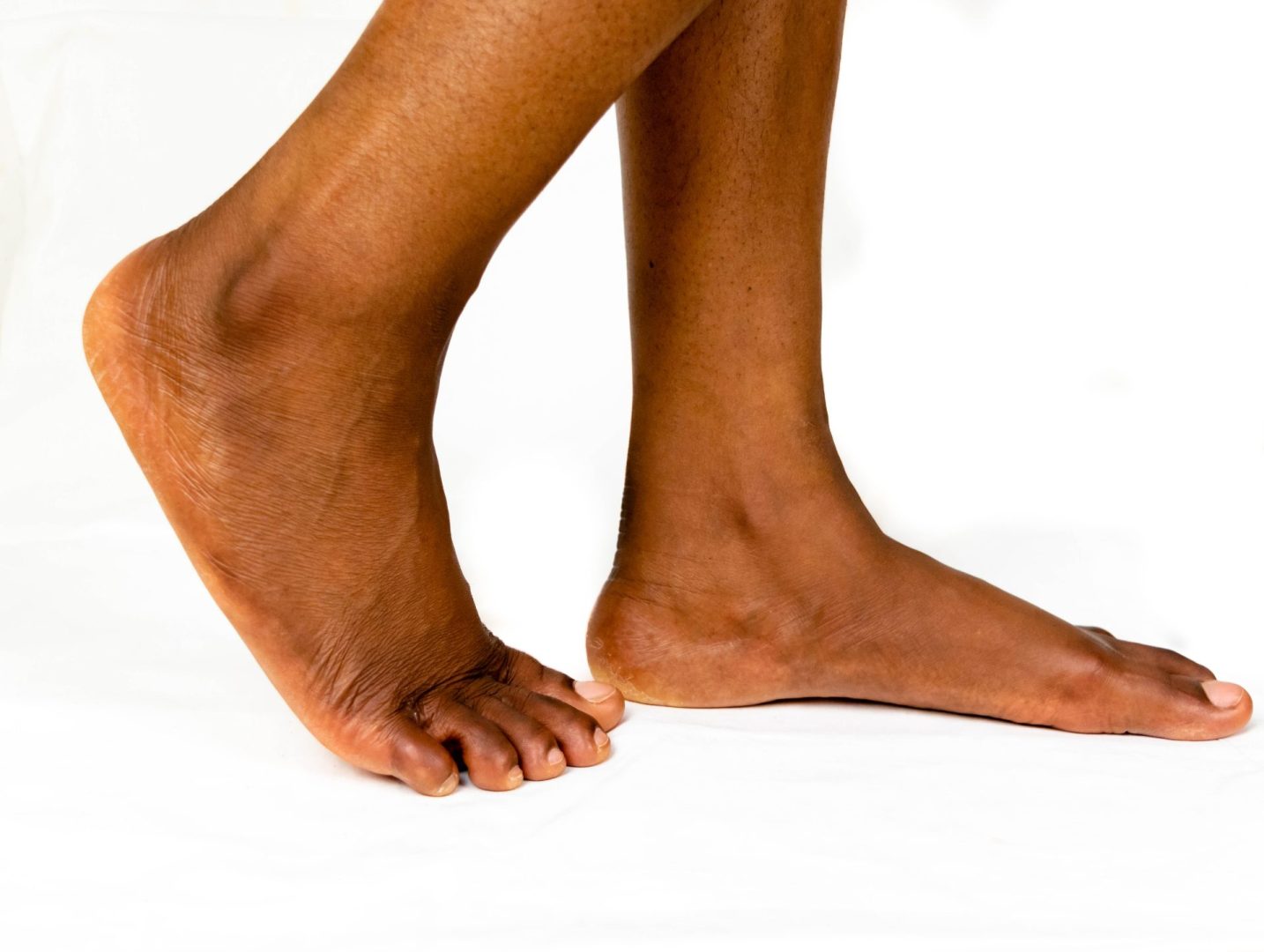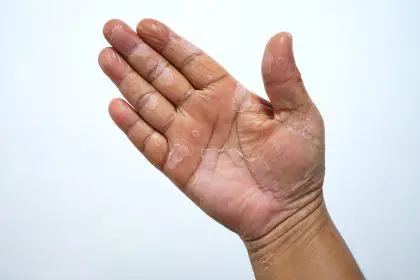While you diligently apply anti-aging creams to your face and protect it from sun damage, your feet silently endure decades of abuse that accelerates their aging process far beyond what happens to facial skin. The stark contrast between well-maintained facial skin and neglected feet becomes increasingly apparent as we age, leaving many people embarrassed by feet that appear decades older than their actual age.
This dramatic difference in aging rates isn’t coincidental or simply due to genetics. Your feet face a unique combination of physical stresses, environmental challenges, and neglect that creates the perfect storm for accelerated aging. Understanding these factors reveals why foot skin deteriorates so much faster and what you can do to slow this process.
The skin on your feet differs significantly from facial skin in thickness, oil production, and cellular turnover rates. These structural differences, combined with the constant pressure and friction feet endure, create conditions that promote rapid aging and deterioration of skin quality.
Most people invest considerable time and money in facial skincare routines while completely ignoring their feet until problems become severe. This neglect allows minor issues to compound over years, creating visible aging that far exceeds what occurs on regularly maintained skin elsewhere on the body.
1. Constant pressure from body weight crushing delicate skin structures
Every step you take places your entire body weight directly onto the relatively small surface area of your feet. This constant pressure compresses delicate skin structures, blood vessels, and fat pads that normally provide cushioning and support for healthy skin.
Over years of walking, this repetitive compression breaks down the natural padding in your feet, particularly in the heel and ball areas. As these fat pads thin, your skin becomes more susceptible to damage from continued pressure, creating a cycle of deterioration that accelerates with age.
The pressure distribution across your feet isn’t even, leading to areas of concentrated stress that develop thick, hardened skin as a protective response. These calluses and areas of hyperkeratosis make feet appear older and rougher than skin that doesn’t experience such constant mechanical stress.
Weight-bearing pressure also affects blood circulation in foot tissues. Compressed blood vessels struggle to deliver adequate nutrients and oxygen to skin cells, while waste products accumulate more readily, contributing to premature aging and slower healing of minor damage.
2. Friction from shoes causing microscopic damage that accumulates over time
The constant rubbing of shoes against foot skin creates continuous microscopic trauma that your body must constantly repair. Unlike facial skin that rarely experiences sustained friction, foot skin endures this mechanical stress for hours every day throughout your lifetime.
Poor-fitting shoes exacerbate this problem by creating pressure points and areas of increased friction that lead to callus formation, blisters, and chronic irritation. Even well-fitting shoes create some degree of friction, particularly during extended periods of walking or standing.
The materials in shoes can also contribute to skin damage through chemical irritation or allergic reactions. Synthetic materials, dyes, and adhesives can cause chronic low-level inflammation that accelerates skin aging and creates conditions that promote bacterial or fungal growth.
Moisture trapped inside shoes creates an environment where friction becomes more damaging. Wet skin is more susceptible to tearing and injury from rubbing, while the warm, moist environment promotes bacterial growth that can further damage skin integrity.
3. Poor circulation limiting nutrient delivery and waste removal
Feet represent the farthest point from your heart in your circulatory system, making them naturally more susceptible to circulation problems that worsen with age. Reduced blood flow means less oxygen and fewer nutrients reach foot skin cells, while waste products accumulate more readily.
Gravity works against circulation in your feet, requiring your cardiovascular system to work harder to return blood from your extremities. As circulation efficiency decreases with age, feet often show the first signs of inadequate blood flow through changes in skin color, temperature, and healing ability.
Sitting for extended periods, tight clothing, and certain medical conditions can further compromise circulation to your feet. This reduced blood flow not only accelerates aging but also impairs your skin’s ability to repair daily damage from pressure and friction.
Cold temperatures cause blood vessels in feet to constrict, further reducing circulation during winter months. This seasonal reduction in blood flow can lead to dry, cracked skin that ages more rapidly than skin with consistent, adequate circulation.
4. Neglect and lack of moisturizing creating chronic dryness
Most people apply moisturizer to their face daily but completely ignore their feet, leading to chronic dryness that accelerates aging. Foot skin has fewer oil glands than facial skin, making it naturally more prone to dryness and requiring additional moisture to maintain healthy appearance.
The thick, calloused skin that develops on feet from pressure and friction becomes even more prone to dryness and cracking. Without regular moisturizing, this hardened skin develops deep fissures that not only look aged but can become painful and prone to infection.
Dry skin loses its elasticity and flexibility, making it more susceptible to cracking and injury from normal daily activities. This creates a cycle where damaged skin becomes even drier and more prone to further damage, accelerating the visible aging process.
Environmental factors like low humidity, hot showers, and harsh soaps can strip natural oils from foot skin. Without replacement through moisturizing, feet develop the dry, rough texture characteristic of aged skin much faster than protected facial skin.
5. Sun exposure without protection causing premature photoaging
While people religiously apply sunscreen to their face, feet often receive significant sun exposure without any protection. The tops of feet are particularly vulnerable when wearing sandals or going barefoot, leading to photoaging that includes wrinkles, age spots, and rough texture.
Ultraviolet radiation breaks down collagen and elastin in skin, the proteins responsible for maintaining youthful appearance and elasticity. Foot skin experiences this damage without the benefit of regular sunscreen application that protects facial skin from similar damage.
Reflected sunlight from sand, concrete, and water can increase UV exposure to feet beyond what you might expect. This reflected radiation often catches people off guard, leading to sunburn and long-term damage that contributes to accelerated aging.
The skin on the tops of feet is relatively thin compared to the soles, making it more susceptible to sun damage. This thin skin shows signs of photoaging more readily than thicker skin elsewhere on the body, contributing to the aged appearance of feet.
6. Fungal and bacterial infections causing chronic inflammation
The warm, moist environment inside shoes creates ideal conditions for fungal and bacterial growth that can cause chronic skin problems contributing to premature aging. These infections often persist for months or years, causing ongoing inflammation that damages skin structure.
Athlete’s foot, toenail fungus, and bacterial infections are common foot problems that many people ignore or treat inadequately. The chronic inflammation from these conditions breaks down healthy skin structure and impairs the skin’s ability to repair itself effectively.
Fungal infections can cause skin to become thick, discolored, and rough in texture. Even after successful treatment, the affected skin may never fully return to its original appearance, leaving permanent signs of aging and damage.
The itching and irritation from these infections often leads to scratching and picking that creates additional skin damage. This mechanical trauma, combined with the underlying infection, accelerates the development of aged-looking skin.
7. Structural changes in bones and joints affecting skin appearance
Age-related changes in foot bones and joints can dramatically alter the shape and appearance of feet, stretching skin in unnatural ways and creating areas of increased pressure and friction. These structural changes often develop gradually but have profound effects on skin aging.
Conditions like bunions, hammertoes, and fallen arches change how weight distributes across your feet, creating new pressure points and areas of friction that accelerate skin aging. The skin must adapt to these changed contours, often resulting in callus formation and rough texture.
Joint stiffness and reduced flexibility in feet can alter walking patterns, creating abnormal pressure and friction patterns that contribute to accelerated skin aging. These gait changes often develop so gradually that people don’t notice them until significant skin changes have occurred.
The loss of fat padding in feet that occurs with age exposes bones and joints more directly to pressure and friction. This reduced cushioning makes skin more susceptible to damage and contributes to the bony, aged appearance that many older feet develop.
8. Hormonal changes affecting skin thickness and oil production
Hormonal fluctuations throughout life, particularly during menopause, can dramatically affect skin quality and aging rates. These changes often affect foot skin more severely than facial skin due to the additional stresses feet endure.
Declining estrogen levels reduce collagen production and skin thickness, making foot skin more susceptible to damage from pressure and friction. The skin becomes more fragile and less able to withstand the daily stresses that feet experience.
Reduced oil production that occurs with hormonal changes affects foot skin more severely because feet naturally have fewer oil glands than facial skin. This double impact of reduced natural oils and decreased hormone-stimulated oil production leads to chronic dryness and accelerated aging.
Hormonal changes can also affect circulation and healing ability, making it harder for foot skin to repair daily damage. This reduced healing capacity allows minor injuries and irritation to persist longer, contributing to premature aging.
9. Temperature extremes causing repeated damage and stress
Feet experience more extreme temperature variations than facial skin, from hot pavement in summer to freezing conditions in winter. These temperature extremes cause repeated expansion and contraction of skin that contributes to premature aging.
Hot surfaces like sand, concrete, and car floors can cause thermal damage to foot skin that may not be immediately apparent but contributes to long-term aging. This heat damage breaks down skin proteins and can cause chronic inflammation.
Cold exposure causes blood vessels to constrict, reducing circulation and making skin more prone to cracking and injury. The repeated cycle of cold exposure followed by rewarming can damage skin structure over time.
Indoor heating and air conditioning create dry environments that strip moisture from foot skin, while temperature transitions from indoor to outdoor environments cause additional stress on skin that must adapt to these changes.
10. Chemical exposure from cleaning products and floor treatments
Feet come into direct contact with household chemicals, floor cleaners, and treatments that can cause chronic low-level damage contributing to premature aging. Unlike hands, which people often protect with gloves during cleaning, feet receive no protection from these chemicals.
Walking barefoot on recently cleaned floors exposes foot skin to residual chemicals that can cause irritation, dryness, and inflammation. These exposures accumulate over time, contributing to the aged appearance of foot skin.
Pool chemicals, particularly chlorine, can be particularly damaging to foot skin during regular swimming activities. The combination of chemical exposure and prolonged water contact can strip natural oils and damage skin structure.
Carpet treatments, floor waxes, and other household products can cause allergic reactions or irritation that leads to chronic inflammation. This ongoing irritation accelerates skin aging and can cause permanent changes in skin texture and appearance.
Taking action to slow foot aging
Understanding these factors empowers you to take steps to slow the aging process in your feet. Regular moisturizing, proper footwear, protection from sun exposure, and attention to foot hygiene can dramatically improve the appearance and health of foot skin.
Consider incorporating foot care into your daily routine just as you do facial skincare. Daily moisturizing, weekly exfoliation, and regular inspection for problems can prevent many of the issues that contribute to premature foot aging.
Professional foot care can address structural issues, treat infections, and provide specialized treatments that improve both the health and appearance of your feet. Regular podiatric care becomes increasingly important as you age and these aging factors compound over time.















